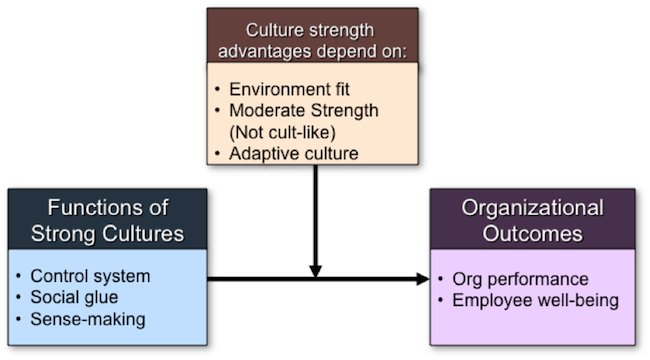Often times when we look at organisations, whether big or small, there is a certain unique “personality” about them. Each company has its own flair, or even attitude with which it takes on the world and conquers their own business territory. This unique aspect can be seen when taking an observational look at the organisation and its true culture – the one that makes it come alive. To better understand how a culture can shape the organisation we turn to the field of Organisational behaviour and theory. Organisational behaviour is a study that can be used not only to learn about the complexities of a workplace, but also to equip us with the tools to use one day in our future career. The study of organisational behaviour explains what people think, feel, and do with regards to the internal and external context of the organisation. Organisational behaviour is critical for everyone and can contribute to the success of a company.
So why is understanding organisational behaviour so critical to your business?
The fact is, this topic is often disregarded – however, it is one that can create motivated individuals and strong leaders to enable an organisation to flourish in dynamic environments. Organisational behaviour can enable us to make sense of the world we live in and prepare us to understand, and effectively handle the challenges and diversities within organisations today.
The further we dig, it is not only about understanding the behaviour of the organisation that is important, but it is about identifying the culture that shapes and drives these very behaviours that we see. Organisational culture is defined as the shared values and assumptions within an organisation. The culture of an organisation also emphasizes what the company values as important and can shape the behaviours and personalities of individuals in the firm. An example of this is the culture of West Jet. Employees know that the organisation values fun, customer-focus, and entrepreneurial spirit. Their employees share these values and this increases their commitment to the organisations’ success. In addition to shared values and assumptions, the organisational culture can also be seen through artifacts such as:
- Physical structures
- Language
- Rituals and ceremonies
- Stories and legends
A strong culture can enable an organisation to be more effective. The three key functions of a culture are to control, bond, and make sense of the internal and external environments of the firm. Culture can bring employees together and can direct them towards achieving organisational goals. A strong culture can also enable your company to attract and retain individuals who share common values and who are a good “fit” for your organisation. A culture of shared values can give employees a sense of membership and belonging to your organisation. This demonstrates how a culture functions as the “social glue” that bonds employees together and motivates them to adopt the culture in order to fulfill their need for social identity. Organisational culture therefore acts as a control system by persuading employees to behave in ways that are consistent with your company’s expectations.
Furthermore, a culture not only functions to control behaviours and bond employees, but it also enables individuals to make sense of their environment. When struggling to lead employees towards their goals and tasks, culture can empower employees to understand what behaviours are expected of them, and it can clarify role perceptions. This role clarity can reduce employee stress in the workplace, which contributes to a successful and effective organisation.
How Can You Apply This to Your Own Business?
When considering culture in your own business it is important to be able to manage the organisation’s culture to prevent it from becoming overbearing. Although a strong culture can create an effective organisation there are several challenges and contingencies to consider. When a culture becomes too strong it can be hard for managers and business owners to change the behaviours of employees and it will take a long time for the change to be properly implemented. A strong culture will only contribute to the effectiveness of the organisation when it aligns with the environment, avoids a corporate cult, and includes an adaptive culture.
So Why is Alignment with the Environment so Important? It is important to ensure that the organisation’s culture is aligned with the environment. The dominant values and assumptions need to be in tune with the marketplace to enable the organisation to succeed. An example of misalignment was seen with the culture of Dell Computers and it’s environment. While they valued cost-efficiency and competitiveness, the environment required Dell to be innovative in order to meet customer demands. Although Dell’s culture was strong, it was no longer appropriate to effectively satisfy the consumer needs.
Is Stronger Always Better?
The strength of a culture should also be carefully managed. When a culture becomes too strong, or cult-like, it can prevent employees from seeing new opportunities and it can suppress subcultures within the organisation. It is also important to incorporate an adaptive culture to enable employees to be open to change. This fosters a strong sense of ownership amongst employees and they take responsibility for the organisation’s performance and alignment with the external environment.
The functions of a strong culture along with the three contingencies can enable an organisation to achieve positive outcomes involving organisational performance and employee well-being.

This is further demonstrated in Exhibit 14.3. This diagram shows that the benefits of cultural strength depend on the culture’s fit with the environment, moderate strength, and inclusion of an adaptive culture. These three contingencies affect the functions of a culture and determine the outcomes of the organisation’s success. Proper management and review of the organisational culture can create highly effective organisations that support employees through shared values and a sense of belonging.
Source: McShane, S., Steen, S. (2012). Canadian Organizational Behaviour (8th Canadian ed.).
Whitby, ON.

